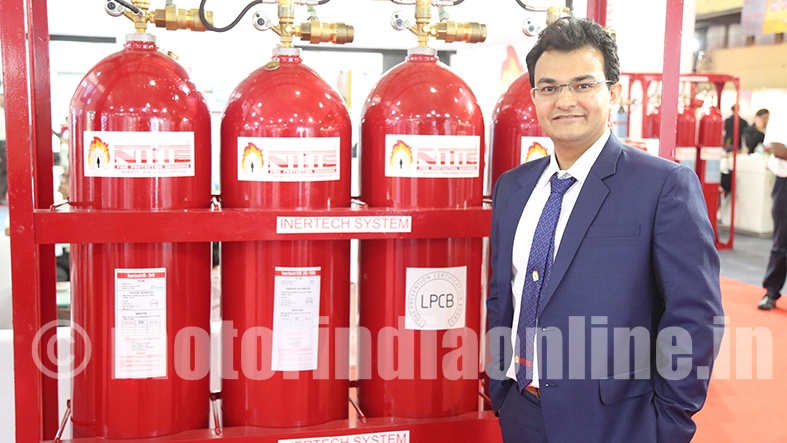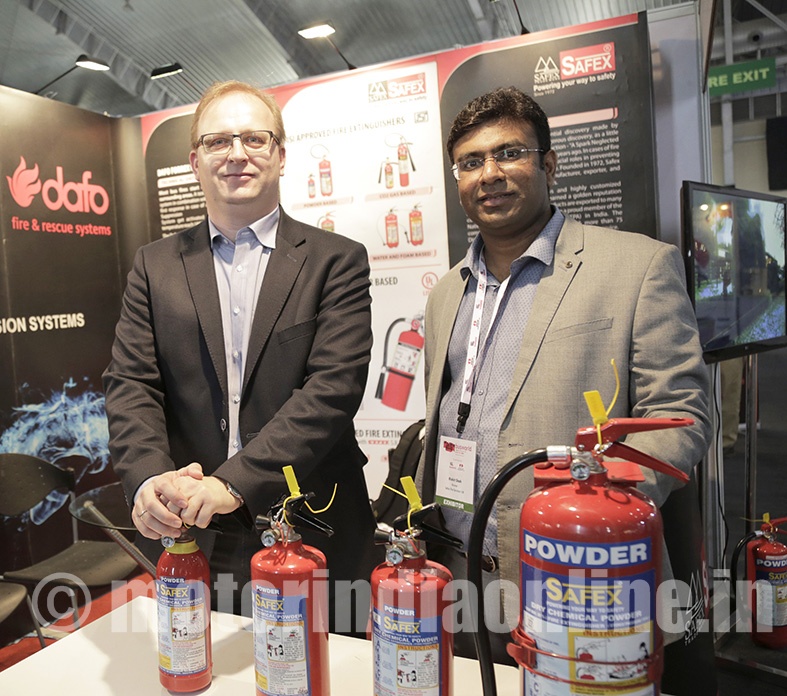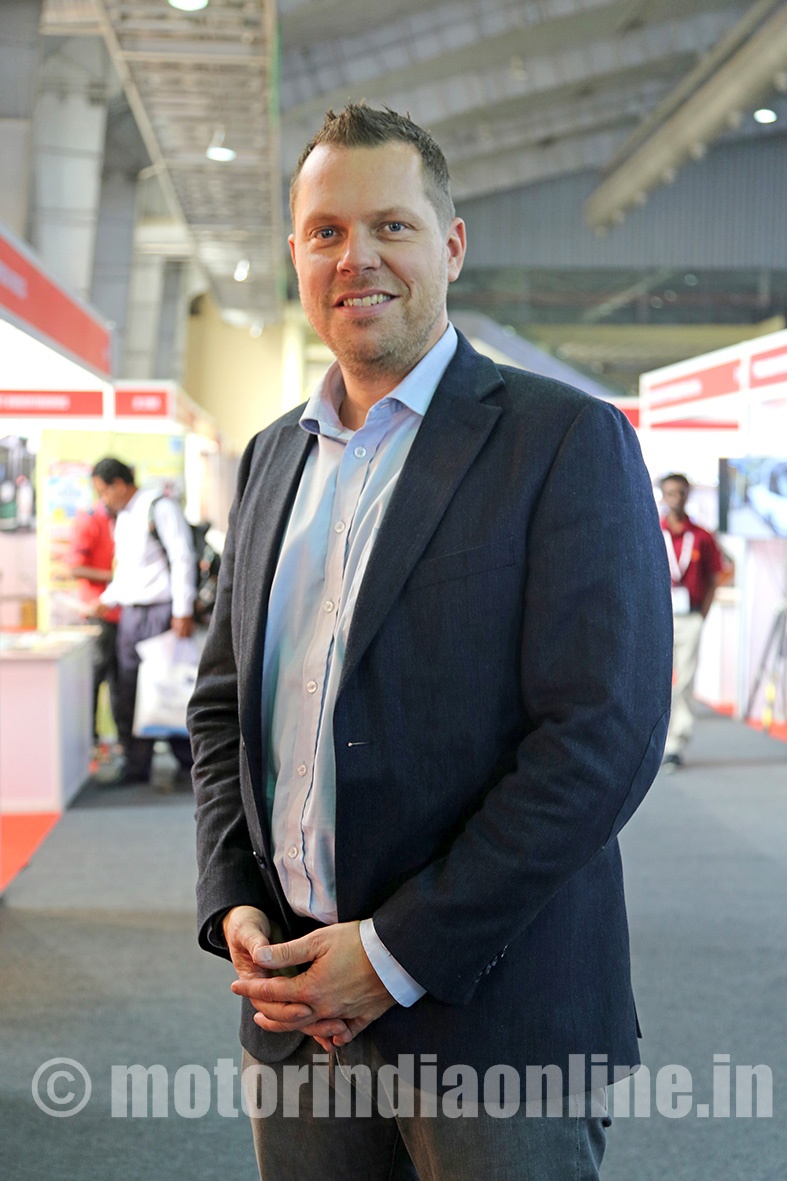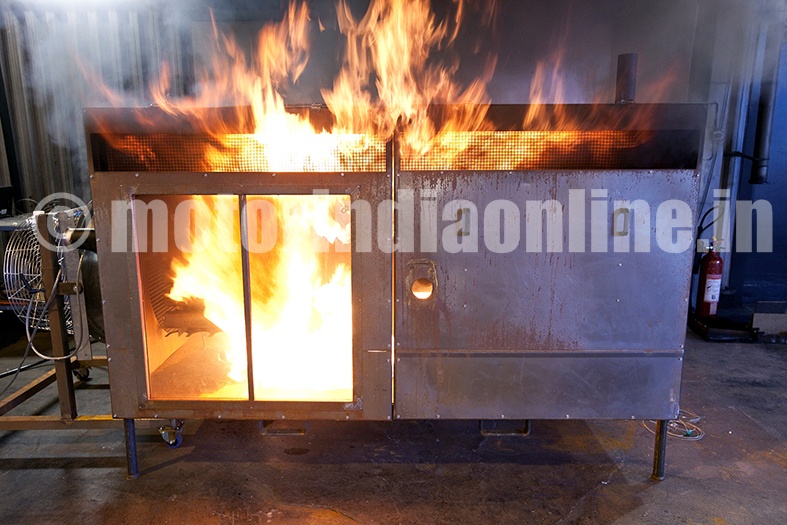“I don’t think you would ever be able to completely reduce all the fires, because fires will always happen and it is always a risk that you will have,” says Mr. Fredrik Rosen, Marketing Manager, SP Fire Research, Sweden. His verdict may sound damning but is true. Mr. Rosen represents an organization which according to him is one of the largest fire research facilities in the world and has been actively promoting bus fire safety for more than a decade now.

But India has been resistant to the idea of implementing fire safety systems in its buses till now. Though now the experts feel that it is somewhat waking up to this serious and omni-present risk plying on our roads.
It’s heartening to know that MORTH has initiated the first step and has made AIS135 mandatory. Mr. Kunal Shah, Executive Director, Nitin Fire Protection Industries adds, “Recently, MORTH has come up with AIS135 which is a great step forward. Since there have been several incidences of fire in school buses of late, we feel that AIS 135 standard should be mandatory for school buses also. We also feel that the Ministry should also make it mandatory for all the intercity buses in the initial phase and then take it forward for the city buses as well. Since we are moving towards EURO VI, heat generation in the engine area will only increase and in turn, there could be more incidences of fires in buses as well.”
ARAI published a draft named AIS-135 in August 2015 and announced that, “In 49th meeting of AISC, it was decided to formulate an AIS standard on the subject “Fire Detection & Suppression System (FDSS) for Buses” to standardize the specifications and test procedures for FDSS systems as technology neutral covering only performance parameters and not supplier specific specifications. “
An avoidable risk
Risk of fire in buses is more common the world over than one can imagine. But how proactive every country is towards this ever present risk is what makes the difference. According to Mr. Priit Pella, Export Sales Director – Eastern Europe, DAFO Fire & Rescue Systems, also from Sweden, has a global network for their fire safety systems, “A mixture of engine, heat, oxygen, combustible material like a broken hose or some oil spill on the hot surface can ignite a fire.” DAFO systems use water based fire suppression systems.
Handling fires in buses is part and parcel of keeping the risk to a minimum. He adds, “We have to be aware of that none of the bus operators or the drivers are actually trained to be fire fighters. Even if they know how to use extinguishers in the right way it may not be enough because sometimes the fire can be big already and extinguishers cannot be used. Hence, an automatic system will actually do the job for you.”

Preventive measures
All fire safety experts swear by one major preventive measure – maintenance. The root of the problem most often can lie in the way the vehicle has been maintained. Whether it is automobiles, construction equipment or other heavy machinery, it is the maintenance people who need to be fully aware of the upkeep of the piece of equipment.
Mr. Pella shares, “Fire suppression is mainly about awareness of the bus owner and whether he wants to provide additional safety for his customers, his crew and his business. Further, even if the Fire Suppression System (FSS) has been installed in the bus, there is still the need to fit a portable fire extinguisher because some fire may not be only in the engine compartment. Actually fire safety starts from daily maintenance, repair, cleaning. And if everything has been done and then you have a bad day and face a fire accident then we can help. Keeping engine compartment clean, not using it as a storage room is a must. Daily maintenance and proper repair is the biggest help in preventing fires.”
Mr. Shah says, “The advantage our product has is that we have developed a software wherein the system is connected to the computer and an automated report is generated detecting if the system is working fine and what measures to take if it’s not.”
Niting Fire Protection Industries’ systems work on the Rate Of Rise Principle, where detectors sense sudden changes in temperature against time and immediately signal if fire has ignited and instantly discharging the extinguishing agent.

SP Fire Research is developing a new system of certification to standardize fire safety norms with users. Mr. Rosen explains, “We are developing a new certification system called the P-certification for vehicle manufacturers. It is important that everyone – from the design people, the production and maintenance people – knows about fire extermination. It is important that everyone is aware of the importance of proper maintenance, so that they use the right materials that are fire resistant and that they don’t place plastic tubes over hot surfaces. Increasing the awareness of the maintenance people would be a huge step. And then of course the designers of the buses also need to be aware of the risks that are linked to certain materials or placement of materials.”
He quotes from his field experience when he says that, “We find out that this big fire could have been avoided if a screw, which has not been tightened enough, has set off vibrations which built up and added to corrosion and resistance which eventually lead to fire. Tiny little mistakes can lead to big fires often.”
New challenges
With hybrid and electric buses gaining popularity with governments, including that of India, in an effort to reduce air pollution, new challenges are cropping for fire safety system makers.
Mr. Pella agrees, “We have to follow the technology. Hybrid and electric bus are different and they are a challenge for us because it is the nature of fire which is different in them. In the new buses, we are talking about chemical fire which starts from batteries and the heat build-up through the chemical process. Managing such fires will be the next big challenge for everybody in the fire industry.”
Mr. Rosen echoes that the need for more in-depth research is imperative in the times of changing drive-lines, “The knowledge in this area is quite limited all over the world. We need more research in this area. The most frequent fires happen from the engine compartments, and then next come the wheel well fires. Then there is post-crash initiated fire. So all these types of fires need to be researched into more.”

If the idea of equipping our vehicles with fire safety systems to protect lives and lessen damage to the economy is only slowly catching up now in India, well, it’s better late than never. To think that fleet owners, a few years ago, were known to have second thoughts before installing such systems and thus making buses more expensive, we have come a long way.
Thumbs up to installing fire safety systems in our buses!